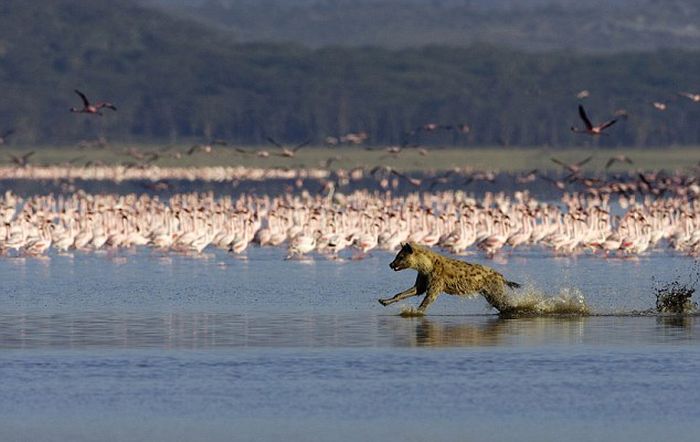|
|
Hyena Catches A Flamingo
|
• Bone-crushing hyenas
By 10-12 million years ago, the hyena family had split into two distinct groups; that of the dog-like hyenas and the bone-crushing hyenas. The arrival of the ancestral bone-crushing hyenas coincided with the decline of the similarly built but unrelated Percrocutidae family. The bone-crushing hyenas survived the devastating changes in climate and the arrival of canids, which wiped out the dog-like hyenas, though they never crossed into North America, as their niche there had already been taken by the Borophaginae family. By 5 million years ago, the bone-crushing hyenas became the dominant scavengers of Eurasia, primarily feeding on large herbivore carcasses felled by sabre-toothed cats. One genus, Pachycrocuta, was a 200 kg (440 lb) mega-scavenger that could splinter the bones of elephants. With the decline of large herbivores by the late ice age, Pachycrocuta was replaced by the smaller Crocuta.
• Rise of modern hyenas
The aardwolf can trace its lineage directly back to Plioviverrops 15 million years ago, and is the only survivor of the dog-like hyena lineage. Its success is partly attributed to its insectivorous diet, for which it faced no competition from canids crossing from North America. Its unrivaled ability to digest the terpene excretions from soldier termites is likely a modification of the strong digestive system its ancestors used to digest foetid carrion.
|
|









